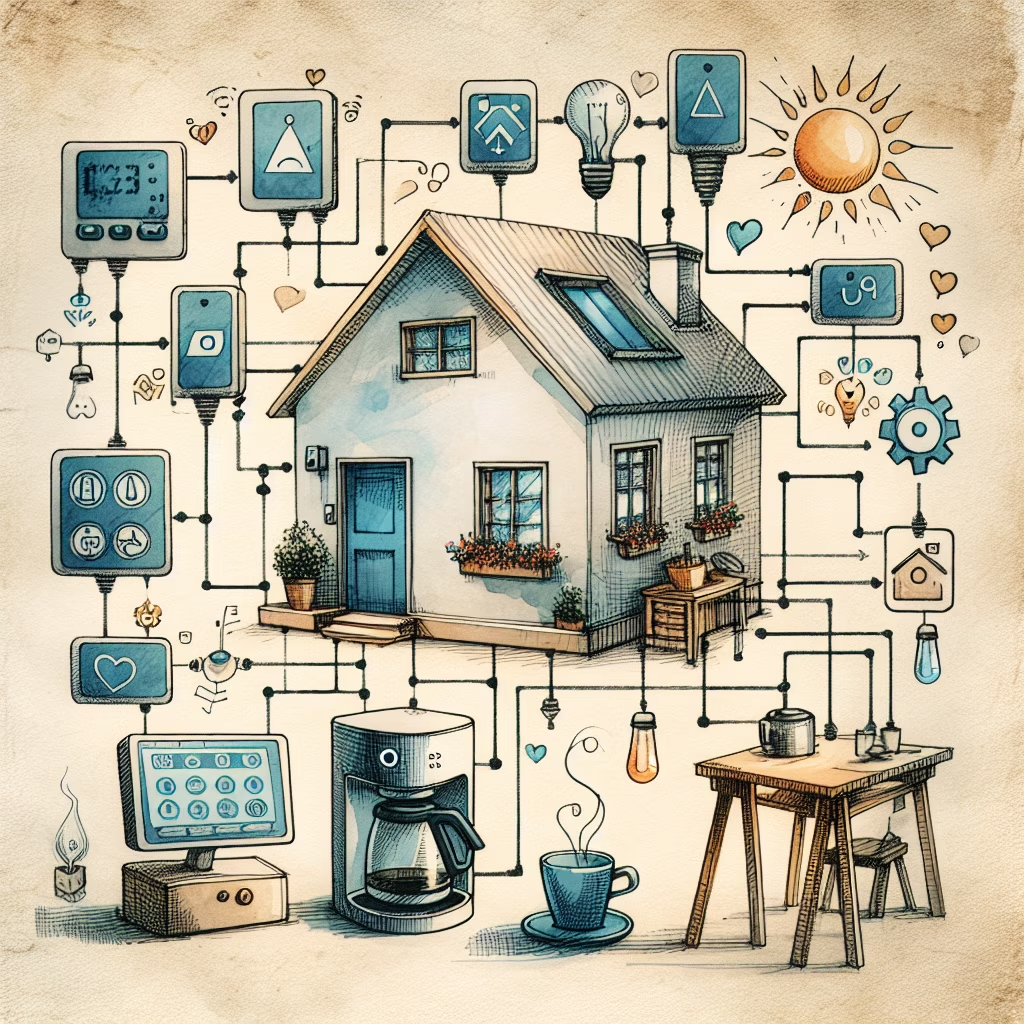Building a DIY home automation system can seem like a daunting task, but with the right planning and tools, you can create a smart home that meets your needs and fits your budget. This guide will walk you through the steps to plan, design, and implement your own home automation system.

Home automation involves the control and automation of lighting, heating, ventilation, air conditioning (HVAC), and security systems, as well as home appliances like washers, dryers, ovens, and refrigerators. Modern systems typically use WiFi for remote monitoring and control via a central hub or gateway, which can be accessed through a mobile phone, tablet, or web interface.
Good to Know: Before diving in, make sure home automation aligns with your expectations. It’s not just about convenience but also about improving energy efficiency and security.
Begin with easy-to-automate tasks such as controlling lights, electrical plugs, heating, curtains, doors, and HVAC systems. You can even include pumps for your aquarium, lights for your pool house or garden, or even your Christmas tree.
Author's Tip: Focus on one area at a time to avoid getting overwhelmed. For example, start by automating the lights in your living room before moving on to more complex systems.
Automating your home requires thorough planning. Start by modeling your home to understand the layout and where you want to place your devices. Tools like Visio can help create a 2D floor plan, but even a simple sketch can be useful.
Things to Consider:
Select the technology and components that best fit your needs. This includes choosing a central hub, sensors, switches, and controllers. Popular options include Arduino, Raspberry Pi, and various smart home platforms like HomeKit, Alexa, and Google Home.
Good Practices:
Safety is paramount when working with electrical components. Any modification to your home must be studied, planned, and executed by a knowledgeable person. Avoid using underrated components that could pose a fire hazard.
Safety Tips:
Once you have all the components, follow the manufacturer’s instructions to install them. After installation, test each device to ensure it works as expected. Make adjustments as needed to optimize performance.
Author's Experience: In my case, I started by monitoring the temperature in my office and then expanded to other areas. Testing and refining the system helped me identify and fix issues early on.
Home automation is an ongoing process. As you become more comfortable with your system, you can add more devices and create more complex automations. Keep refining and expanding your system to meet your evolving needs.
Final Thoughts: Home automation can greatly enhance your living experience, but it requires careful planning and execution. Start small, prioritize safety, and enjoy the journey of creating your smart home.
You can also watch this video tutorial for a visual guide:
Learn how to improve your website's SEO with the latest Google updates. This comprehensive guide ...
This guide provides a comprehensive step-by-step approach to starting a successful blog in 2024, covering ...
Learn how to set up a home automation system using smart devices in 2024 with ...
This document provides a comprehensive guide on how to plan a sustainable garden, covering various ...
This document provides a comprehensive guide to mastering data visualization techniques using Python in 2024, ...
A comprehensive guide on designing a digital marketing funnel for e-commerce in 2024, covering essential ...